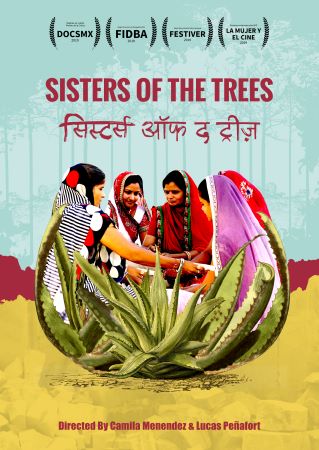
Sisters of the Trees 2019
Distributed by epf media, 324 S. Beverly Drive, PMB 437, Beverly Hills, CA 90212; 310-839-1500
Produced by Victoria Chales
Directed by Camila Menendez and Lucas Peñafort
Streaming, 86 mins
College - General Adult
Environmentalism; Feminism; India
Date Entered: 09/26/2023
Reviewed by Kathleen H. Flynn, Science Librarian, University at AlbanySisters of the Trees tells the story of how a village in India found a creative solution to two of its problems. The village is situated next to large marble mines that were once mountains filled with vibrant nature. Although these mines brought job opportunities to the village, they also wreaked havoc on nature in the form of deforestation, a loss of land, and wells that dried up. The second challenge in the village was the people’s preference for sons over daughters for economic and cultural reasons. Despite this, the village chief, having lost a daughter to dehydration, was inspired to plant a tree in her memory.
Once the village chief fixed the water scarcity problem, he devised a plan to make the most of the now plentiful water and encourage village acceptance of daughters by implementing a tree planting project. This consists of 111 trees being planted upon the birth of a daughter in the village. In addition to other benefits for the families of daughters, the trees generated food, a plant-based product factory, and the return of nature and animals to the region. This resulted in jobs for the community, particularly for women, and increased literacy rates and education for women. A training program was also launched to spread the word of the village’s successful methods to other villages.
The film is a well-made and uplifting story of how a community overcame hardships brought on by environmental destruction and demonstrated the equality of sons and daughters. The juxtaposition of the barren marble mines and the plentiful village oasis is a striking reminder of the value of nature. Although the dialogue is in Hindi and Rajasthani, there are legible English subtitles. The film is highly recommended for courses in women’s studies or environmental and sustainability studies.
Awards:Best International Feature Film, Green Film Festival of Barichara, Colombia; Women Fighting Award, Fusagasuga International Film Festival, Colombia; Special Jury Award, International Documentary Film Festival of Mexico City; Best Cinematography, International Documentary Film Festival Buenos Aires, Argentina; Best Postproduction, Women and Cinema Film Festival, Argentina; SUNCINE International Environmental Film Festival (FICMA), Spain; Melgaço International Documentary Film Festival (MDOC), Portugal; The Guangzhou International Documentary Film Festival, China
Published and licensed under the Creative Commons Attribution 4.0 license. Anyone can use these reviews, so long as they comply with the terms of the license.